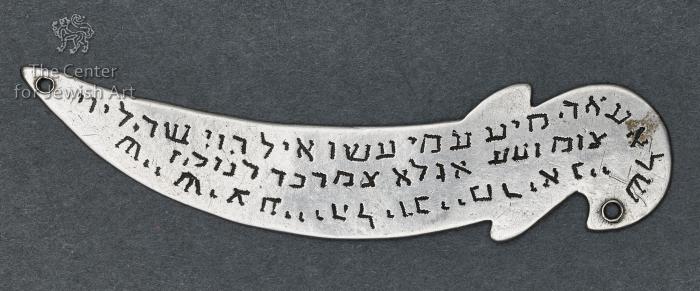Obj. ID: 35853 Amulet, Iraqi Kurdistan, circa 1900

sub-set tree:
The following description was prepared by William Gross:
From earliest times, man has tried to protect himself from misfortune by the use of objects which he considered holy or otherwise (e.g., magically) potent. Amulets and talismans are items generally worn around the neck or wrist, carried in a pocket or purse or hung on a wall. They are meant to protect or aid those who carried or wore them. The Hebrew word for amulet, kame‘a, has the root meaning "to bind". Jewish amulets are usually comprised of texts (either letters or graphic symbols) that are inscribed on some sort of material; some may also contain plant matter or precious stones. The texts of amulets usually include holy names that are believed to have the ability to affect reality, along with incantations summoning angels or other magical powers. For the most part, an amulet has a specific purpose: to ease childbirth, facilitate recovery from illness, improve one’s livelihood, and so on, but in the modern world many are also made for general protection.
The sword-shaped amulet is often used to protect mother and child against Lilith. This use of the symbolic sword is known among the Jews of Morocco, in Southern Germany and Alsace as well as in Kurdistan. In Iraqi Kurdistan this amulet is called "Saifa" (the Arabic word for sword). In Kurdistan if was often used specifically to protect a child whose brother had previously died. The Hebrew inscription may appear either on both sides of the silver sword representation or only on one side. In this example the letters are on one side only. The holes in the miniature sword indicate that it was either sewn to a piece of clothing worn by the person or was hung from a necklace, as in the example from the Gross Family Collection, #027.001.532.
The long inscription on this amulet begins with the letters " Shin Lamed Aleph...." and is from Psalms 121, against fears.


